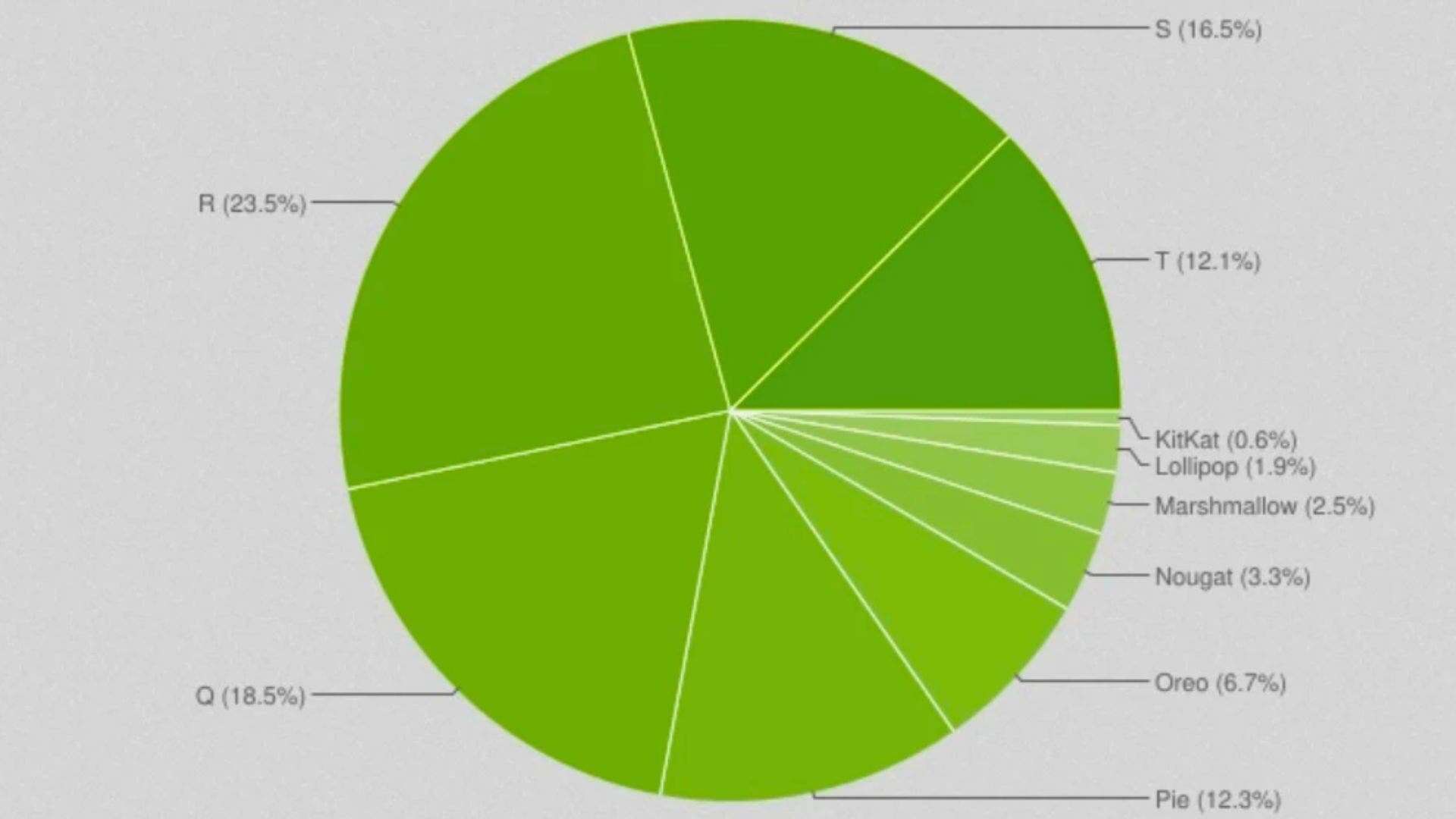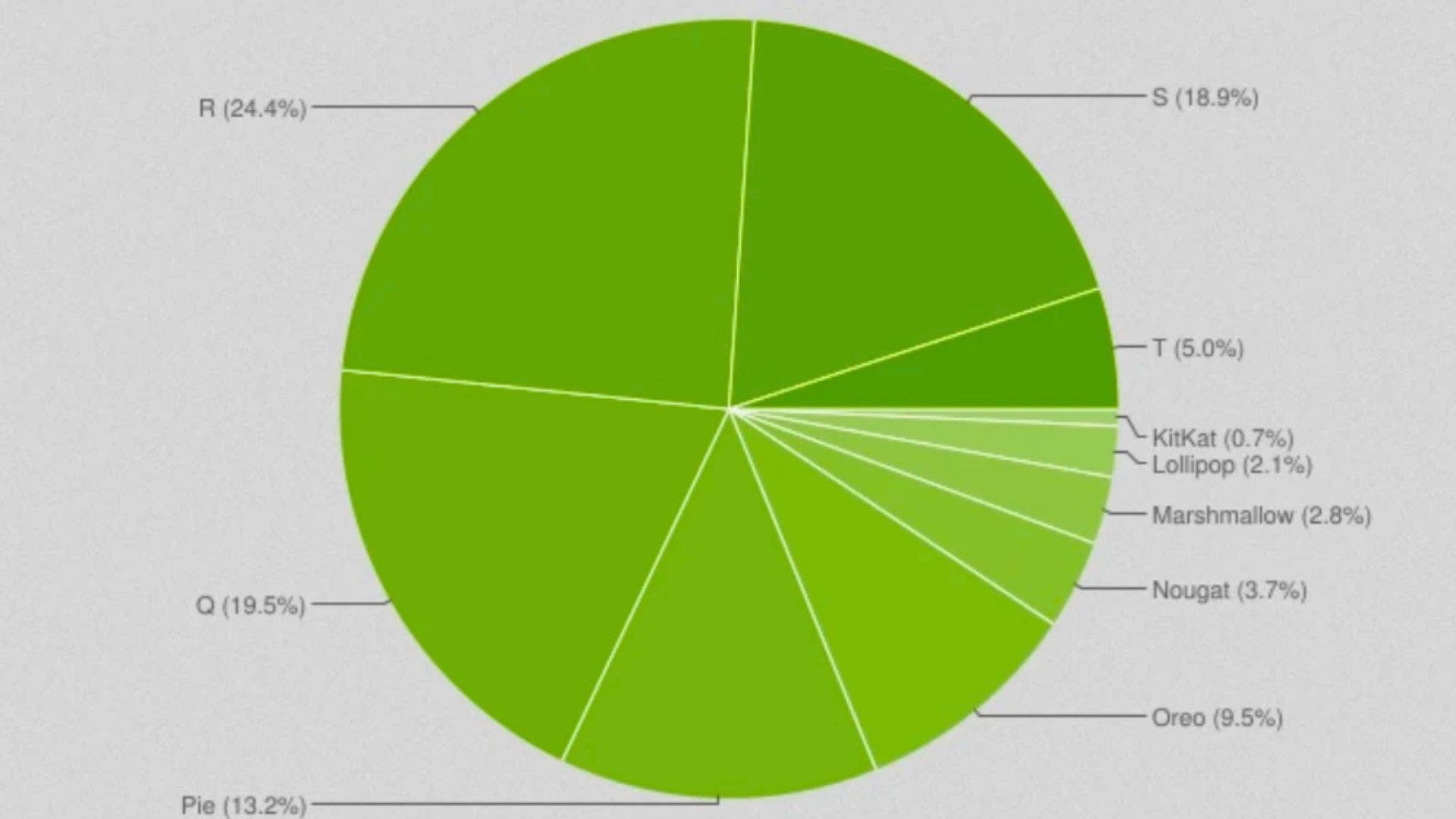Recent data from Android Studio reveals that Android 11 is currently the most popular version. Not just that, but Android 9, also known as Pie, continues to power a significant portion of Android devices. This Highlights the challenge of OS adoption in the Android landscape. However, Android 13 is struggling almost 7 months after its release.
Unlike Apple, which manufactures both iPhones and iOS, Google’s Android OS is utilized by various manufacturers. This results in a staggered update schedule. As a result, the most recent Android OS release is not at the top of the charts for a few months. According to the latest distribution figures for April 2023, Android 11 leads the pack with 23.5% adoption, followed by Android 10 at 18.5% and Android 12 at 16.5%. Surprisingly, Android 9, released in 2018, still powers 12.3% of Android devices in use today.

Challenges with Android Fragmentation:
Users of non-Pixel Android devices often experience delays in receiving OS updates, as manufacturers have their own timelines for rolling out updates.
This results in an uneven distribution of OS versions across different devices, leading to discrepancies in features, security patches, and user experience.
Developers also face challenges in optimizing their apps for various Android versions, requiring additional resources and efforts to ensure compatibility and performance across different devices.

In January, only 5% of Android phones and tablets were found to be running Android 13, which initially appeared to be a low figure. However, there has been a significant increase in the number of devices running the latest Android OS. By the next update we can expect Android 13 to be a Popular Android version.
Samsung, in particular, has played a key role in driving the adoption of Android 13. The company’s aggressive update policy offers four years of Android updates and five years of security updates.
Samsung has contributed to the surge in Android 13’s distribution figures. Other manufacturers have also followed suit and extended their Android update policies, further boosting the adoption of Android 13.
Low Adoption of Android 13:
April 2023 distribution figures reveal that the latest Android OS version, Android 13, has been adopted by only 12.1% of Android devices, despite being available since August.
Manufacturers taking time to roll out updates is a key factor contributing to this slow adoption rate. However, some manufacturers, such as Samsung, have stepped up their update policies. They are now offering longer support for their devices. Their act has resulted in a recent increase in Android 13’s distribution figure.
Older Android OS Versions Share in the Market:
The data also reveals that older Android OS versions, such as Android 8 Oreo, Android 7 Nougat, Android 6 Marshmallow, Android 5 Lollipop, and Android 4.4 KitKat, still power a significant percentage of Android devices, ranging from 0.6% to 6.7%.
This highlights the challenges of updating older devices and the potential security risks of running outdated OS versions.




